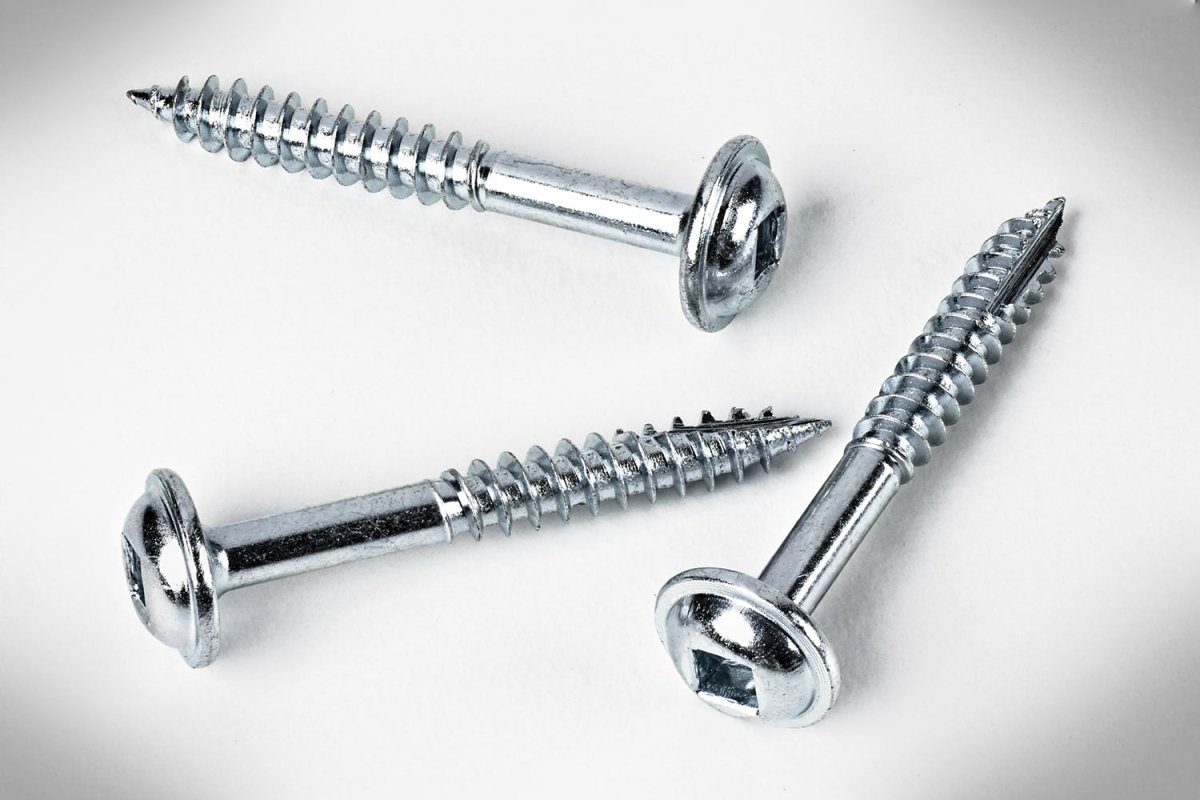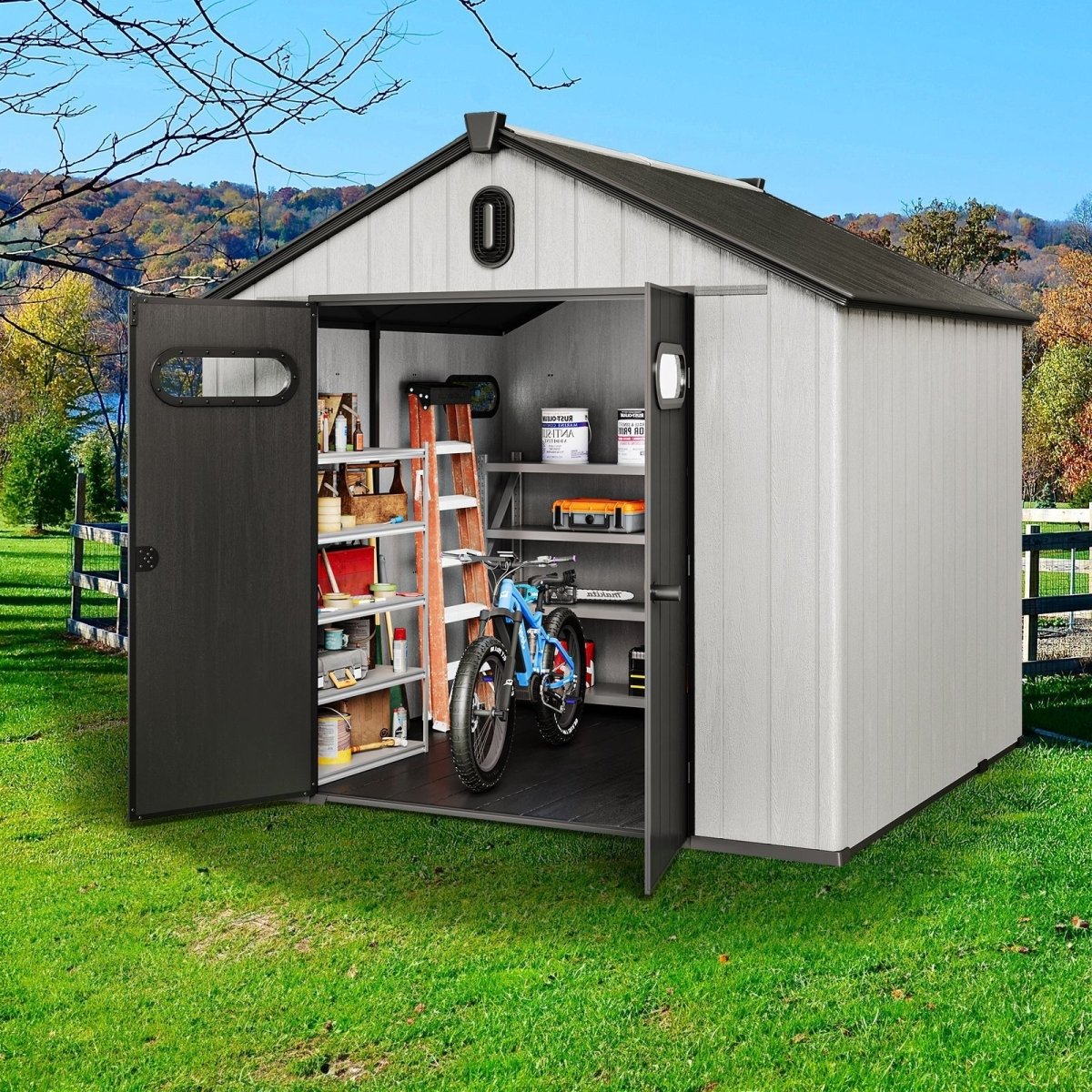Table of Contents
- Anatomy of Pocket Hole Screws
- Understanding Regular Screws
- Head Design Differences
- Thread Pattern Variations
- Tip Design & Function
- Drive Types Comparison
- Materials & Coatings
- Strength & Holding Power
- Best Applications
- Installation Techniques
- Cost Comparison
- When to Use Each Type
- Frequently Asked Questions
Anatomy of Pocket Hole Screws: Designed for Angled Joinery
As a woodworking specialist who's built hundreds of furniture pieces, I've learned that pocket hole screws are engineered for one purpose: creating strong, hidden joints in angled applications. Unlike regular screws, every feature serves a specific function:
Self-Tapping Tip
Drills its pilot hole to prevent wood splitting in angled applications
Washer Head
A wider head provides a greater clamping force without pulling through
Square Drive
Reduces cam-out and provides maximum torque transfer
Coarse Threads
Aggressive threads grab quickly in softwoods and hardwoods
Last month, I helped a customer repair a dining table where someone had used regular screws in pocket holes. The joints failed within weeks. After replacing them with proper pocket hole screws, the table regained its structural integrity.
Understanding Regular Screws: The General-Purpose Fastener
Regular screws come in countless varieties, but they share common characteristics designed for versatility rather than specialized applications:
| Screw Type | Primary Use | Point Type | Head Style |
|---|---|---|---|
| Wood Screws | General wood joining | Sharp point | Flat, oval, or round |
| Drywall Screws | Drywall installation | Sharp point | Bugle head |
| Deck Screws | Outdoor decking | Sharp point | Flat or bugle head |
| Sheet Metal Screws | Metal joining | Sharp point | Flat or pan head |
| Machine Screws | Pre-tapped holes | Blunt end | Various |
Head Design: The Critical Difference
The head design represents the most visible difference between these screw types:
Pocket Hole Screw Heads
- Washer Head Design: Provides larger surface area for better clamping
- Flat Bottom: Sits flush against pocket hole shoulder
- No Countersinking Required: Designed to work with pre-drilled pockets
- Prevents Pull-Through: Distributes force across wider area
Regular Screw Heads
- Various Styles: Flat, oval, round, pan, truss, etc.
- Countersinking Needed: Most require pre-countersinking
- Smaller Bearing Surface: More likely to pull through wood
- Angled Undersides: Designed to pull screw head flush
The washer head on pocket hole screws provides up to 3x the clamping surface of regular flat-head screws. This difference becomes critical when joining materials at angles, where forces try to separate the joint.
Thread Pattern Variations: Grip & Holding Power
Thread design significantly affects how screws perform in different applications:
Pocket Hole Threads
- Coarse, widely spaced threads
- Aggressive bite in both soft/hardwoods
- Minimal threads near head
- Designed for quick engagement
Regular Wood Screw Threads
- Finer, closer-spaced threads
- Sharp edges for clean cutting
- Full-length threading
- Varied patterns by application
The coarse threads on pocket screws allow them to quickly draw joints tight without stripping. Regular screws often require more turns to achieve the same clamping force, increasing the risk of cam-out or driver slippage.
Tip Design & Function: Self-Tapping vs Sharp Point
The tip design reveals the fundamental difference in philosophy between these screw types:
| Feature | Pocket Hole Screws | Regular Screws |
|---|---|---|
| Tip Type | Self-tapping drill point | Sharp gimlet point |
| Pilot Hole Required | No (self-drilling) | Usually recommended |
| Splitting Prevention | Excellent (drills clean hole) | Fair (requires pilot hole) |
| Angled Entry | Optimized for 15° pockets | Not optimized for angles |
Drive Types: Square vs Phillips vs Star
The drive type affects torque transfer, cam-out resistance, and stripping potential:
Square Drive (Robertson)
- Standard for pocket hole screws
- Excellent torque transfer
- Minimal cam-out
- Stays on driver bit
Phillips Drive
- Common on regular screws
- Designed to cam-out at high torque
- Prone to stripping
- Wide availability
Star Drive (Torx)
- Growing popularity
- Superior torque transfer
- Minimal cam-out
- Less common than square
Square drive dominates pocket hole applications because it allows maximum torque without slipping. I've driven thousands of pocket hole screws without a single stripped head, while Phillips screws regularly strip under heavy torque.
Materials & Coatings: Corrosion Resistance
Both screw types come in various materials, but pocket screws often feature specialized coatings:
| Material/Coating | Pocket Hole Screws | Regular Screws |
|---|---|---|
| Zinc-Plated Steel | Common (indoor use) | Very common |
| Blued/Black Oxide | Less common | Available |
| Stainless Steel | Available (premium) | Available |
| Specialty Coatings | Often feature wax lubrication | Rarely wax-coated |
Many quality pocket hole screws feature a wax coating that reduces driving torque by up to 30%. This specialized lubrication is rare on regular screws but makes a noticeable difference when driving dozens of screws in a project.
Strength & Holding Power: Real-World Performance
Pocket hole joints consistently outperform conventional screw joints in strength tests:
Pocket Hole Strength
- Superior clamping force
- Excellent resistance to pull-out
- Strong in shear and tension
- Minimal joint separation
Regular Screw Strength
- Good holding power
- Variable performance
- Dependent on pilot holes
- More joint separation
Independent testing shows pocket hole joints withstand up to 20% more force before failure compared to conventional screwed joints. The combination of washer head clamping and coarse thread engagement creates remarkably strong connections.
Best Applications: When to Use Each Screw Type
Understanding which screw to use where separates amateurs from professionals:
Use Pocket Hole Screws For:
- Furniture construction (cabinets, tables, chairs)
- Face frames and cabinet boxes
- Angled joinery applications
- Projects requiring hidden fasteners
- Situations requiring maximum clamping force
Use Regular Screws For:
- General wood assembly (when appearance doesn't matter)
- Installing hardware and fixtures
- Applications where screws will be visible
- Outdoor projects (with appropriate coatings)
- When pocket holes aren't practical
I recently helped a customer build a bookshelf using our pocket hole screws for the structural frame and regular screws for the adjustable shelf hardware. Choosing the right fastener for each application resulted in a professional-quality piece.
Installation Techniques: Specialized vs General Methods
The installation process differs significantly between these screw types:
| Installation Step | Pocket Hole Screws | Regular Screws |
|---|---|---|
| Drilling Required | Pocket hole jig necessary | Pilot holes often needed |
| Driver Bits | Square drive (#2 most common) | Varied (Phillips, square, star) |
| Clamping | Critical for proper alignment | Helpful but not always necessary |
| Skill Level | Moderate (jig setup required) | Beginner to advanced |
Cost Comparison: Investment vs Value
While pocket hole screws cost more upfront, they deliver better value for specialized applications:
Pocket Hole Screws
- Higher per-screw cost
- Specialized design
- Reduced installation time
- Superior results
- Less waste from failures
Regular Screws
- Lower per-screw cost
- General purpose
- May require more steps
- Adequate for many uses
- Higher failure potential
Considering time savings and reduced material waste, pocket hole screws often prove more economical for furniture projects. The slightly higher cost per screw is offset by faster installation and superior results.
When to Use Each Type: Decision Guidelines
Follow this decision framework for optimal results:
-
Choose Pocket Hole Screws When:
- Creating angled joints
- Need hidden fasteners
- Require maximum clamping force
- Working with expensive materials
- Building furniture or cabinets
-
Choose Regular Screws When:
- Screws will be visible
- Installing hardware
- Working on outdoor projects
- Budget is primary concern
- Making simple butt joints
For most woodworking projects, I keep both types on hand. Our pocket hole screw assortment handles joinery, while regular screws tackle hardware installation and miscellaneous tasks.
Frequently Asked Questions
Can I use regular screws in pocket holes?
Not recommended. Regular screws lack the washer head for proper clamping and may split wood without self-tapping tips. The results are weaker joints that may fail over time.
Why are pocket hole screws so expensive?
Specialized features like self-tapping tips, washer heads, and square drives require more manufacturing steps. The superior performance justifies the cost for woodworking applications.
Do pocket hole screws need pilot holes?
No - their self-tapping tips eliminate the need for pilot holes. This is one of their main advantages over regular screws.
Can pocket hole screws be used outdoors?
Yes, if you choose corrosion-resistant versions like stainless steel or specially coated pocket hole screws designed for outdoor use.
What length pocket hole screws should I use?
The general rule: screw length should equal material thickness plus 1/4" to 1/2". Our screw selection guide provides specific recommendations for various material thicknesses.
Choosing the Right Fastener for Professional Results
Understanding the difference between pocket hole and regular screws transforms your woodworking results. While regular screws serve general purposes well, pocket hole screws deliver specialized performance for angled joinery:
- Superior clamping force from washer heads
- Self-tapping tips prevent splitting
- Square drives minimize cam-out
- Optimized thread patterns for quick engagement
- Specialized coatings reduce driving torque
At Home DIYer, we've curated the perfect pocket hole screw collection for American woodworkers. With sizes for every application and specialized coatings for reduced driving effort, our screws make pocket hole joinery accessible to beginners and professionals alike. Stop compromising with the wrong fasteners and experience the difference proper screws make in your next project!








